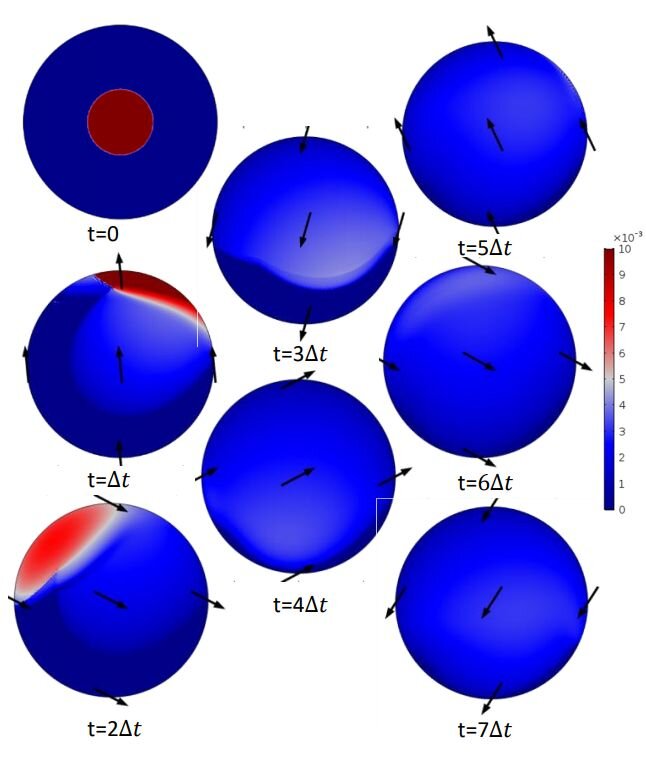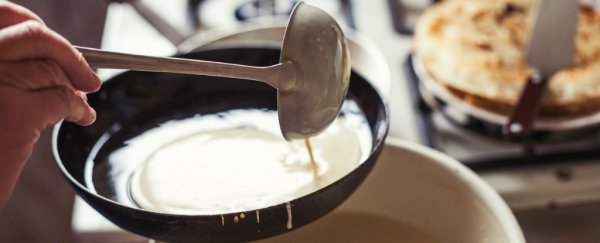Who better to make the perfect crêpe than two French physicists who specialise in fluid dynamics? Edouard Boujo and Mathieu Sellier are experts in their field, and yet both have struggled in the past to cook the thin pancakes with no lumps and bumps in the middle.
Frustrated by their failed attempts and prompted by their hungry families, Sellier, who works at the University of Canterbury in New Zealand, and Boujo, who works at École Polytechnique in France, decided to join forces and do something useful in the kitchen.
Together, they have determined the perfect way to pour and fry a crêpe - and it really is all in the wrist.
Applying a mathematical-based approach, called adjoint optimisation, which explains the motion of fluids in a moving container, the duo created a crêpe-making simulation.
The elusive 'perfect' crêpe, they both agreed, is one that is uniformly flat, hole-free, and cooks evenly across the pan. The trouble is, as the batter cooks, it slowly becomes less viscous and harder to spread, kind of like a lava flow when it heats up and runs only to then cool and slow.
One popular strategy to overcome this is to use a blade to spread the batter on the pan. The other involves tilting the pan and swirling it around.
The second scenario is the one the physicists looked at perfecting.
"As soon as this tilting is initiated, the axial-symmetry of the problem is broken and one cannot help but wondering what the optimal swirling motion is to achieve an optimally thin and round crêpe," the authors write.
Now, we have the answer. The simulation ran the numbers, and found that the best technique is one that many of us already do - a quick wrist flick to start and then a slower twist as it cooks.
More specifically, once the batter is poured, the pan needs to be tilted quite steeply, forcing the liquid to run all the way to the edge. With a twist of the wrist, the pan then needs to be rotated in a circle just once, so that the batter spreads right across the pan. As the rotation is occurring, the steep angle needs to be slowly levelled, so that the pan lies flat just as the whole thing becomes covered in batter.
"Remarkably," the duo concludes, "this is achieved by gradually slowing down the rotating motion as the film solidifies."
The figure below depicts this optimal crêpe-making technique, with the red showing where the batter is thickest and dark blue where it's thinnest.
 (Boujo and Sellier, Phys. Rev. Fluids, 2019)
(Boujo and Sellier, Phys. Rev. Fluids, 2019)
The sequence starts at the top left and proceeds down each column. You can see that with the first flick, the batter (red) is sent to the top right of the pan, leaving a thin smear behind (lighter blue).
Then, with a gradual clockwise twist, the batter is distributed equally across the pan.
Much to the delight of their daughters, the physicists concluded that using this technique, a crêpe's uniformity will be improved by 83 percent against a control pancake.
So, theoretically, if you follow all these steps then - voila! - you will have created the optimal crêpe. Unfortunately, life doesn't always quite fit the model, so this research needs to be taken with a pinch of salt - there are a lot of other variables involved outside of wrist motion when it comes to cooking.
But having a little scientific help with the technique is a good place to start.
This research has been published in Physical Review Fluids.
